How Can You Tell If Somebody Has A Laser Or Infrared Camera Pointing At You
Popular media has been responsible for a wealth of misinformation throughout the years virtually thermal—or infrared—imaging. What exactly can thermal cameras "see" through? To answer that, here's a rundown of the most unremarkably asked questions we receive about what you can and can't run across through using a thermal camera.
(Knowledgeable individuals might bespeak out that thermal cameras don't "see" anything: they detect heat so assign colors based on the range of temperatures detected by the sensor. However, we'll use information technology equally a shorthand in this article.)
Can thermal imaging see through walls?
No, thermal cameras cannot see through walls, at least not like in the movies. Walls are generally thick enough—and insulated enough—to block whatsoever infrared radiation from the other side. If yous bespeak a thermal camera at a wall, it will detect heat from the wall , not what's behind it. Notwithstanding, if something inside the wall causes enough of a temperature difference, a thermal imager will be able to sense it on the surface of the wall. Building maintenance professionals often use thermal imagers to notice bug like water leaks or missing insulation without needing to tear down walls to appraise the trouble.
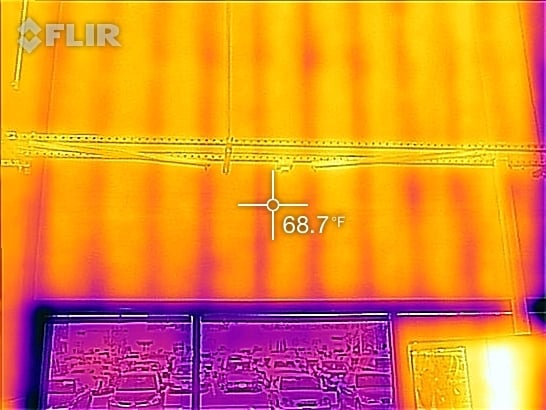
Studs inside the wall (vertical lines) are colder than the insulation, causing a temperature departure on the surface of the wall.
Can thermal imaging see through fume?
Yes, thermal cameras tin can detect estrus through smoke, and are widely used by firefighters for this purpose. Soot particles in smoke effectively block visible light, but allow infrared radiations to pass through, letting firefighters or other first responders navigate through smoke-filled environments.
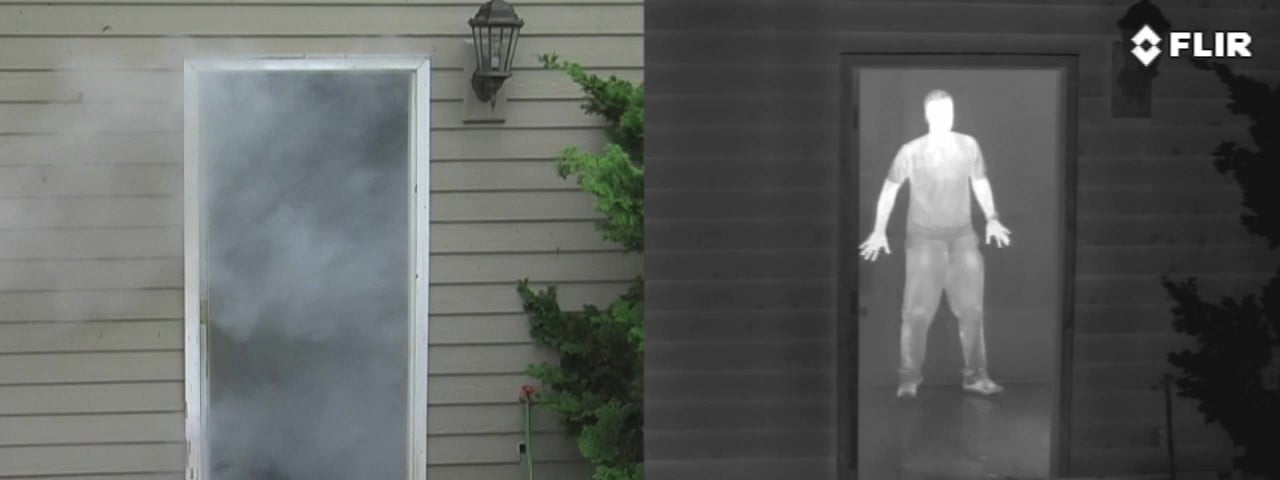
The person in the doorway is concealed by smoke in the visible lite spectrum, but hands detected by thermal imaging.
Can thermal imaging run into through fog?
Fog and rain accept the potential to severely limit the range of a thermal photographic camera due to the scattering of radiation off water droplets. However, in many circumstances, thermal cameras can penetrate fog much more successfully than visible calorie-free cameras or the human eye. This is ane reason why car manufacturers are incorporating thermal imagers into the sensor suites of autonomous vehicles.
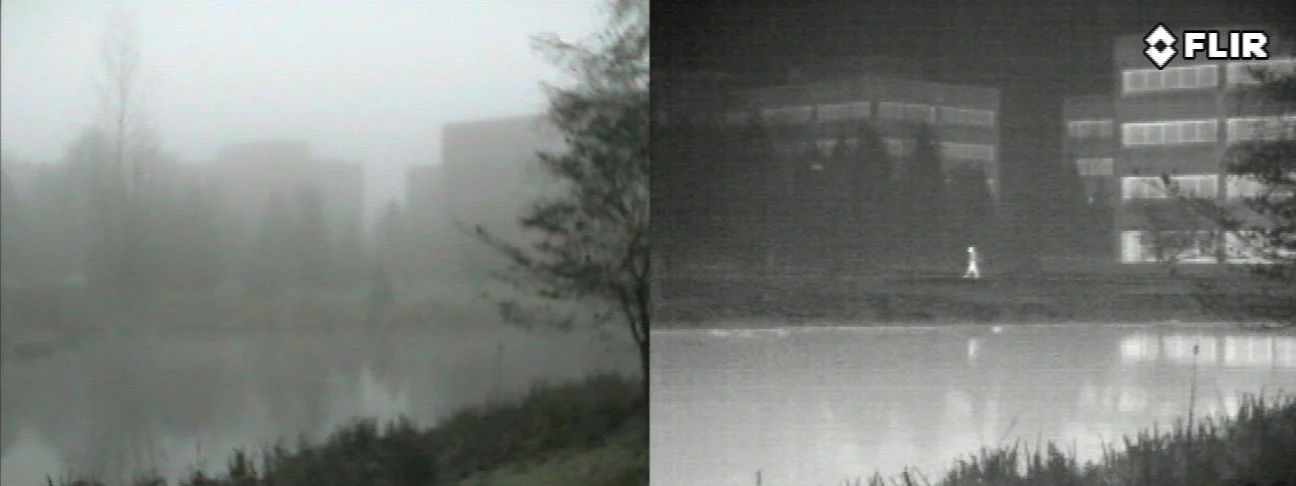
Under certain circumstances, thermal imaging can detect objects through fog much more than clearly than visible light detectors.
Tin thermal imaging see through drinking glass?
Fun fact: glass acts like a mirror for infrared radiation. If you lot point a thermal imager at a window, you won't meet anything on the other side of the glass, but you volition go a nice reflection of yourself in thermal. This is considering glass is a highly reflective material, significant it shows the reflected temperatures of objects rather than letting infrared radiation exist transmitted through. The aforementioned principle applies to other reflective materials, like polished metal.
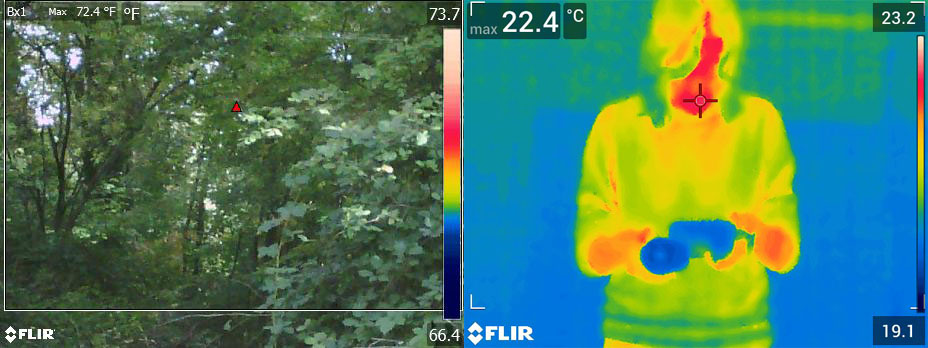
The digital camera sees through the drinking glass to the trees outside, while the thermal camera sees the reflected heat of the photographer.
Can thermal imaging see through concrete?
The answer to this question is basically the same as the question for walls—no, but a thermal camera might exist able to detect something inside the concrete similar a pipe or radiant heating that causes a temperature difference on the surface of the concrete.
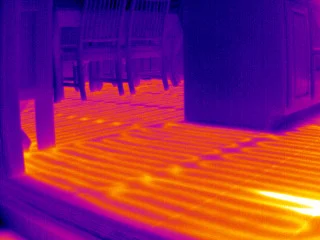
Radiant underfloor heating is conspicuously visible nether a concrete floor.
Can thermal imaging encounter through metallic?
Metal tin can be a tricky material in the thermography world. Shiny metallic—any metal object that is shine or polished—will reverberate infrared radiation, acting every bit an infrared mirror just similar glass. This tin cause difficulties for anyone trying to monitor pipes or mechanism for overheating parts. Oxidized metal or metal that has been painted with a matte material is much easier to measure accurately (cheque out our commodity Using Low-Cost Materials to Increment Target Emissivity to learn more). In all cases, thermal cameras can never see "through" metal objects, but conductive metals might reveal hot spots, common cold spots, or the level of a substance inside a metal container.
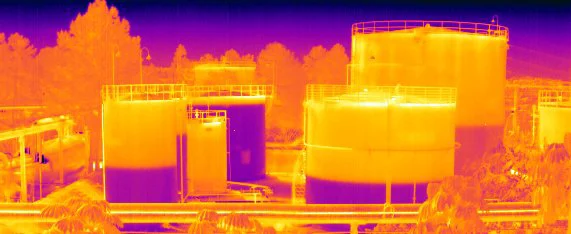
Information technology's piece of cake to meet how full these tanks are in infrared because of the temperature difference on the metallic surface caused by the liquid inside.
Can thermal imaging encounter through trees?
A thermal camera can't detect objects through the body of a tree, but thermal can assist with spotting people or animals in forested areas. Search and rescue teams often apply thermal imaging to spot heat signatures when searching through large tracts of wilderness.
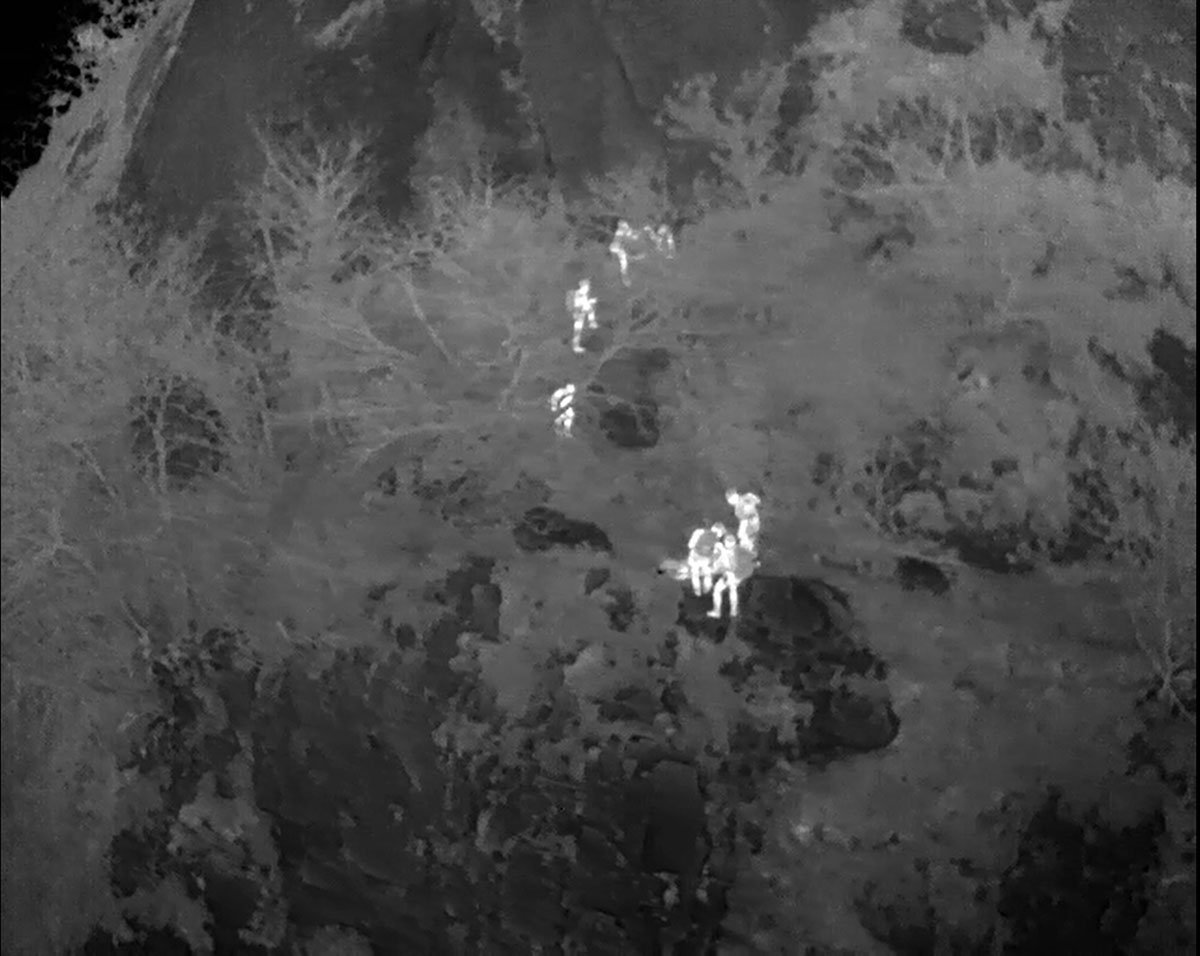
Thermal imaging cannot see through copse (or forest), just it tin can be helpful for spotting people in forested areas where their heat signatures stand up out much more than than a visible image might.
Tin thermal imaging see through plastic?
A fun party trick to perform with a thermal photographic camera is to concord up a sparse, opaque sheet of plastic (like a garbage bag) in forepart of a warm object or person. Infrared radiation volition pass through the plastic, assuasive the thermal photographic camera to detect whatsoever is backside it, while visible light will be blocked. However, this trick merely works with very thin plastic—thicker plastics will cake infrared radiation.
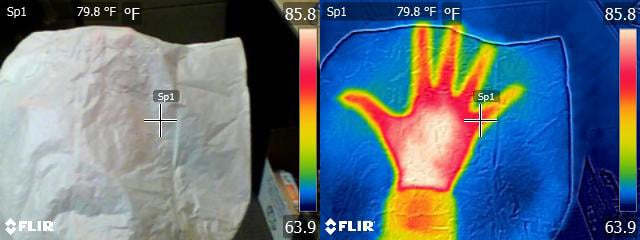
Visible lite is by and large blocked by the plastic pocketbook, just infrared radiation is transmitted.
Can thermal imaging run across in the night?
Last bonus question! The answer: yes! Thermal imaging is non affected past darkness at all, requiring no visible light to visualize heat. (Check out our article on Thermal Imaging vs. Nighttime Vision to learn more than.)
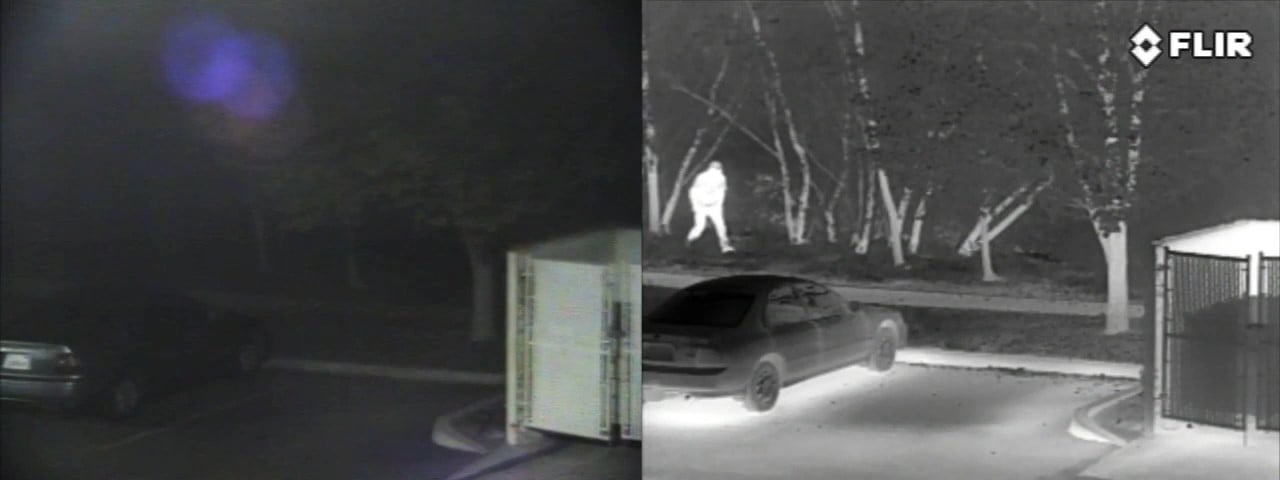
CCTV footage vs thermal imaging demonstrates that thermal requires no visible light to form an image.
Source: https://www.flir.com/discover/cores-components/can-thermal-imaging-see-through-walls/
Posted by: dixonsatereat.blogspot.com

0 Response to "How Can You Tell If Somebody Has A Laser Or Infrared Camera Pointing At You"
Post a Comment